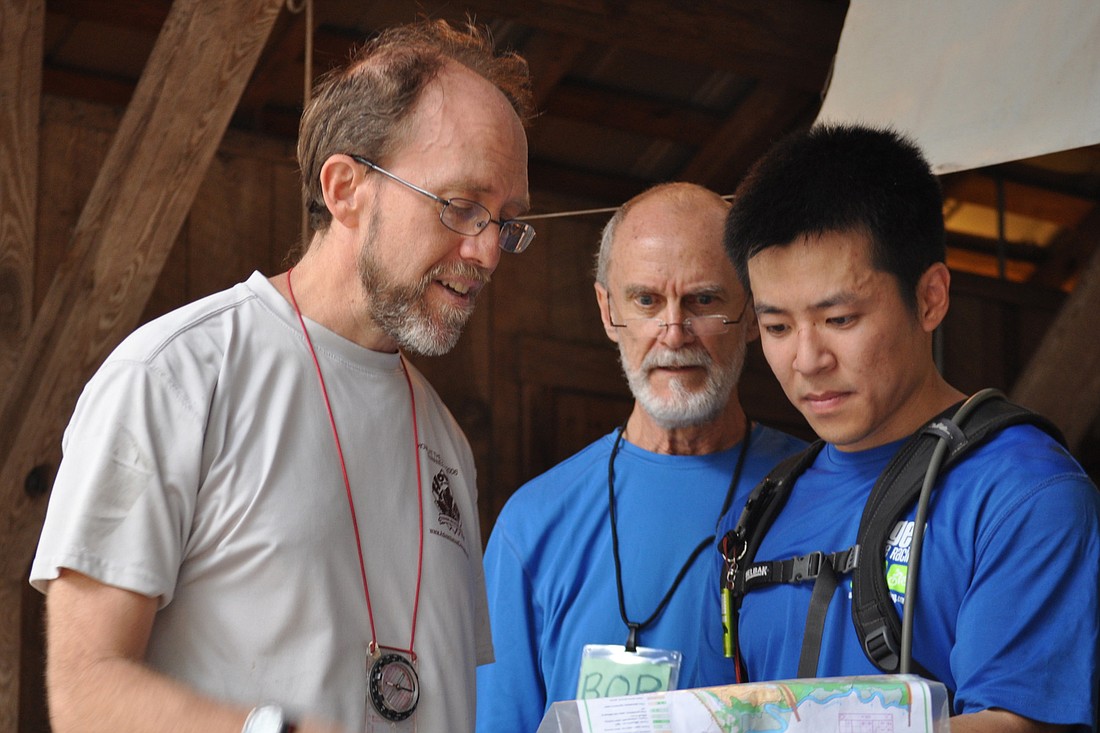- April 26, 2024
-
-
Loading

Loading

Stepping on an alligator isn’t necessarily as bad as it sounds. Daytona State College Professor Ron Eaglin says. And he should know. He’s done it. Twice.
“They just hiss at you and curl up,” he said.
No big deal.
Eaglin was describing this scenario after making the case for crashing straight through the water along the edge of the ponds at the Agricultural Museum, where he’d just finished an orienteering course: a kind of race where contestants, all starting alone and at different times, use map and compass to find a series of hidden markers, competing for the fastest time.
Eaglin doesn’t like to go around obstacles like ponds — not when it’s quicker to go through — so he braves the gators. (He got into orienteering and adventure racing, he said, after running 10Ks and marathons got dull.)
At the Ag Museum Saturday, Eaglin was one of about 100 people competing on courses set up by Florida Orienteering, a Central Florida-based branch of the U.S. Orienteering Federation, which oversees the rules of the sport.
Usually, about 250 people show up for contests, but the rainy weather forecast probably scared some away, said Florida Orienteering co-founder Bob Putnam, who got into the sport 35 years ago after reading a story about it in Reader’s Digest.
Not all of the people who came out to compete Saturday were athletes. Many were recreational orienteers, hiking the courses instead of running them.
Families moseyed along the trails of the event’s gentler courses, color-coded white and yellow. A gaggle of young sisters out on a wooded trail with their mom blamed each other for missing a marker.
St. Augustine resident Wendy Williams came out with her daughter Sophia, 12, after seeing a notice about the event on Facebook.
They took a little longer to make it around the course than they’d planned — about three hours, because like many orienteering newbies, they got turned around a few times — but enjoyed the event anyway.
“It was fun,” Wendy Williams said. “I recommend anyone to try it.”
Orienteering is a stand-alone sport, but the map and compass skills it requires are used in other outdoor pastimes. Students in JROTC programs, learning basic military land navigation, often come to Florida Orienteering courses to compete, said Putnam, as do adventure racers.
Eaglin runs adventure races, and ran the Saturday’s blue course — a 6.4 mile trek, much of it through tangled forest — in just under two hours. But he keeps his eyes and ears open on the trail.
Showing off the intermediate-level orange course Saturday, he stopped when he heard a high-pitched barking off in the woods: probably a fox, he said.
He’s seen plenty during his orienteering and adventure racing, along with bears, bobcats, and coyotes.
Once, a dolphin followed his canoe, nipping at the paddle. “He was really interested in what we were doing,” Eaglin said.
That kind of unpredictability keeps orienteering and adventure racing fresh, he said. How many other sports come with nipping dolphins, barking foxes and hissing alligators?
“I’ve never gotten bored with orienteering, and I’ve never gotten bored with adventure racing,” he said. “I can run two hours hard on the blue courses, and every one of them will be different.”
Try it out
Want to try orienteering?
Check out the Florida Orienteering website, at floridaorienteering.org, for detailed orienteering and map/compass navigation tutorials and a list of upcoming events.